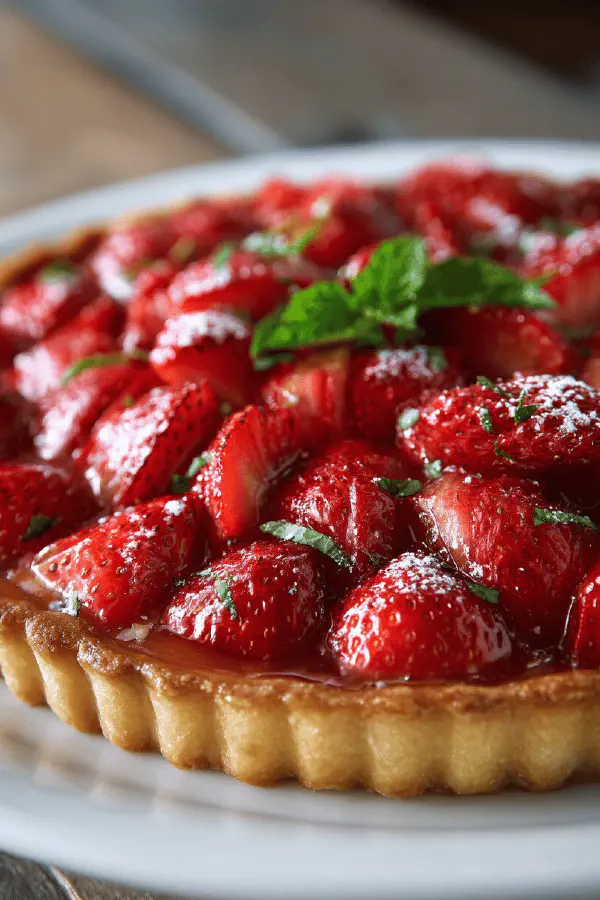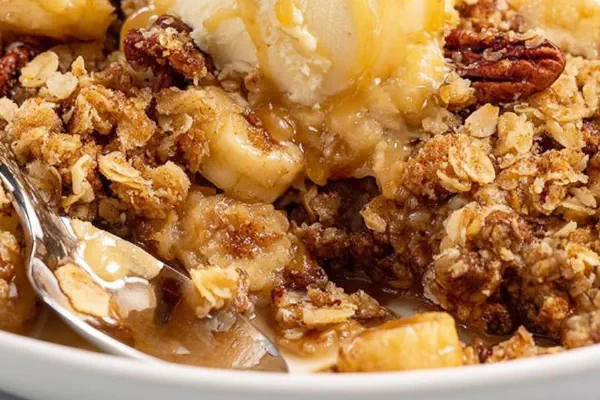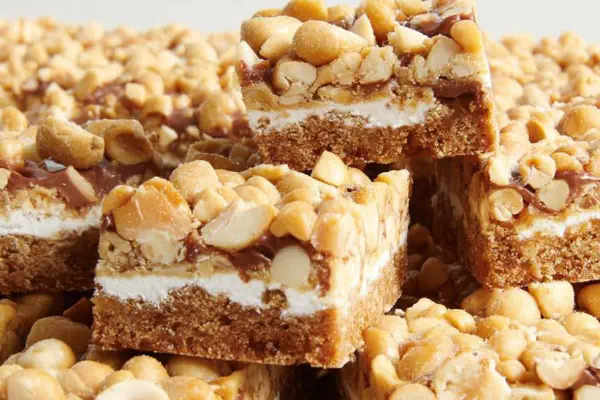Featured Recipe
Strawberry Rhubarb Tart

By Kate
"
A classic tart mixing fresh strawberries and rhubarb with a flaky pastry. The dough balances sweetness and salt, while tapioca thickens the juicy filling. Adjust oven temps and watch the crust color for doneness. Substitute coconut oil for butter for dairy-free option. Expect a tender crust, bubbling filling, and vibrant color. Good for 8 servings.
"
Prep:
35 min
Cook:
50 min
Total:
Serves:
8 servings
desserts
tarts
summer recipes
baking
Introduction
Bright fruit tart, textures ranging from crisp, flaky crust to juicy, thickened filling. The sour rhubarb tempers the strawberries’ sweetness, zested lemon and orange cut through richness. You’ll hear crust crackling as the oven works its magic, smell butter baking out notes, and see vibrant red bubbling life through vents. Seb practical stuff—pastry’s your baseline: keep butter cold; pulse not churn; chill well. Tapioca not flour—in fruit pies, tapioca’s the silent hero holding juices without gumminess. Oven temp crucial—start hot to set crust, then slower finish to avoid burning. Watch bottom crust, always a reliable doneness clue.
Ingredients
Pastry
- 355 ml (1 1/2 cups) all-purpose flour
- 1/4 tsp salt
- 30 ml (2 tbsp) granulated sugar
- 125 ml (1/2 cup plus 1 tbsp) unsalted butter, very cold, chopped
- 85 ml (1/3 plus 1 tsp) ice water, adjust as needed
- 900 ml (3 3/4 cups) fresh strawberries, halved
- 420 ml (1 3/4 cups) peeled rhubarb, sliced
- 150 ml (2/3 cup) granulated sugar
- 45 ml (3 tbsp) quick-cooking tapioca
- 15 ml (1 tbsp) fresh lemon juice
- 5 ml (1 tsp) orange zest
Filling
About the ingredients
Flour—standard all-purpose works but watch protein content for flakiness. Butter should be well chilled, no compromises. Could swap butter with coconut oil for dairy-free, slightly different crumb and flavor but works. Ice water key for flour hydration without warming dough. For filling, rhubarb must be peeled and sliced evenly to cook uniformly. Strawberries should be ripe but firm, not mushy. Using quick-cooking tapioca blends thickening with minimal cloudy juice; avoid regular tapioca that requires longer cooking. Lemon juice and orange zest not just flavor—they balance sugar and brighten normally dull rhubarb notes.
Method
Pastry Preparation
- Put flour, salt, and sugar in food processor bowl; pulse briefly to combine. Add cold butter chunks; pulse intermittently for 8-10 seconds—stop before it becomes a paste. The mixture should look crumbly with pea-sized bits. Too warm changes texture; keep it cold.
- Drizzle ice water slowly while pulsing; add just enough so dough starts to clump but doesn’t stick to sides aggressively. Dump out, bring dough together quickly with floured hands—don’t overwork or you'll toughen it. Form two discs, wrap tightly with plastic. Chill at least 35 minutes. Longer if warm kitchen.
- Toss strawberries and rhubarb in large bowl with sugar, tapioca, lemon juice, and orange zest. The acid helps brighten flavors; zest adds depth. Tapioca thickens juices gently—avoid flour which can taste pasty. Let sit 10 minutes for juice to start.
- Preheat oven to 210ºC (410ºF)—hot to set crust quickly underneath. Roll one pastry disc on lightly floured surface into 23 cm (9 inch) circle; thicker edge than center keeps shape during baking. Fit into 20 cm (8 inch) tart pan with removable bottom if possible. Dock bottom lightly with fork except edges to prevent bubbles.
- Pour filling evenly into crust. Roll second disc; lay carefully atop. Crimp edges to seal well. Cut small vents to release steam—too little traps moisture, too big dries filling.
- Place tart on lower oven rack; bake 12 minutes until edges puff and show golden tint. Lower temperature to 175ºC (350ºF). Continue baking 42-47 minutes. Watch bottom crust color through pan or carefully lift edge with spatula to check browning deeply—should be golden, not pale, but avoid burnt spots.
- Filling should bubble steadily; juices thick and glossy. If edges brown too fast, shield with foil. Cool slightly on wire rack. Tart can be served warm or room temperature for flavors to settle.
Filling Mix
Assembly and Baking
Technique Tips
Start by combining dry ingredients then add cold butter to maintain flaky layers—process rapidly and intermittently. Overmixing turns dough tough; flour and water addition control is delicate—too much water causes sticky dough, too little breaks apart. Chill dough well; cold dough rolls easier, shrinks less in oven. Docking pastry bottom stops air bubbles, adds texture. For filling, let sugar draw juice from fruit—watch tapioca swell; do not skip lemon and orange components, they’re subtle but essential for taste balance. During bake, place tart on lower rack for heat from bottom—the critical factor for a solid, crisp crust. After 10-12 minutes bake at high temp, lower oven to moderate temp to allow thorough cooking of fruit without crust burning. If crust edges brown too fast, use foil shield. Final check: crust golden, filling thick and bubbling gently, aroma rich and complex. Cool slightly to prevent filling collapse.
Chef's Notes
- 💡 Keep butter chilled for a flaky pastry. If too warm, texture changes, becomes dense. Pulse dough. Don’t churn; avoid warmth. Follow tips for dough that holds together without being sticky.
- 💡 Adjust ice water in dough. Too much makes sticky mess. Too little leads to breaking apart while rolling. Quick pulse all ingredients, blend until just clumping. Remember—chilled dough rolls smoother.
- 💡 For filling, fresh, ripe strawberries are key. Should be firm, not mushy. Rhubarb must be uniform in cook; peel before slicing. Always mix well but don’t overdo. Let sit to draw juices.
- 💡 At bake, don’t forget to check the bottom crust. Should be golden, not pale. Little bubbles in the filling, thick and shiny? That's how you know you're in the zone.
- 💡 Keep an eye on edges while baking. If browning too fast, cover with foil. Always check bottom crust color, reliable doneness cue. Cool slightly before slicing, set filling.
Kitchen Wisdom
How to fix a soggy bottom crust?
Check bake times; could be underbaked. Pre-bake crust for a few minutes before adding filling next time. Ensure oven is hot enough.
Can I make this tart ahead?
Yes, chill filling if making early. Store baked tart at room temp for short time. Refrigerate for longer storage if needed, but crust may soften.
What can I substitute for rhubarb?
Try tart apples. It won't be exactly same but will work. Adjust sugar down slightly if using sweeter fruits to balance flavors.
How long does the tart last?
In fridge, around 3-4 days. Crispness fades, crust softens but flavors remain. Keep covered but do not stack; avoid squishing.



